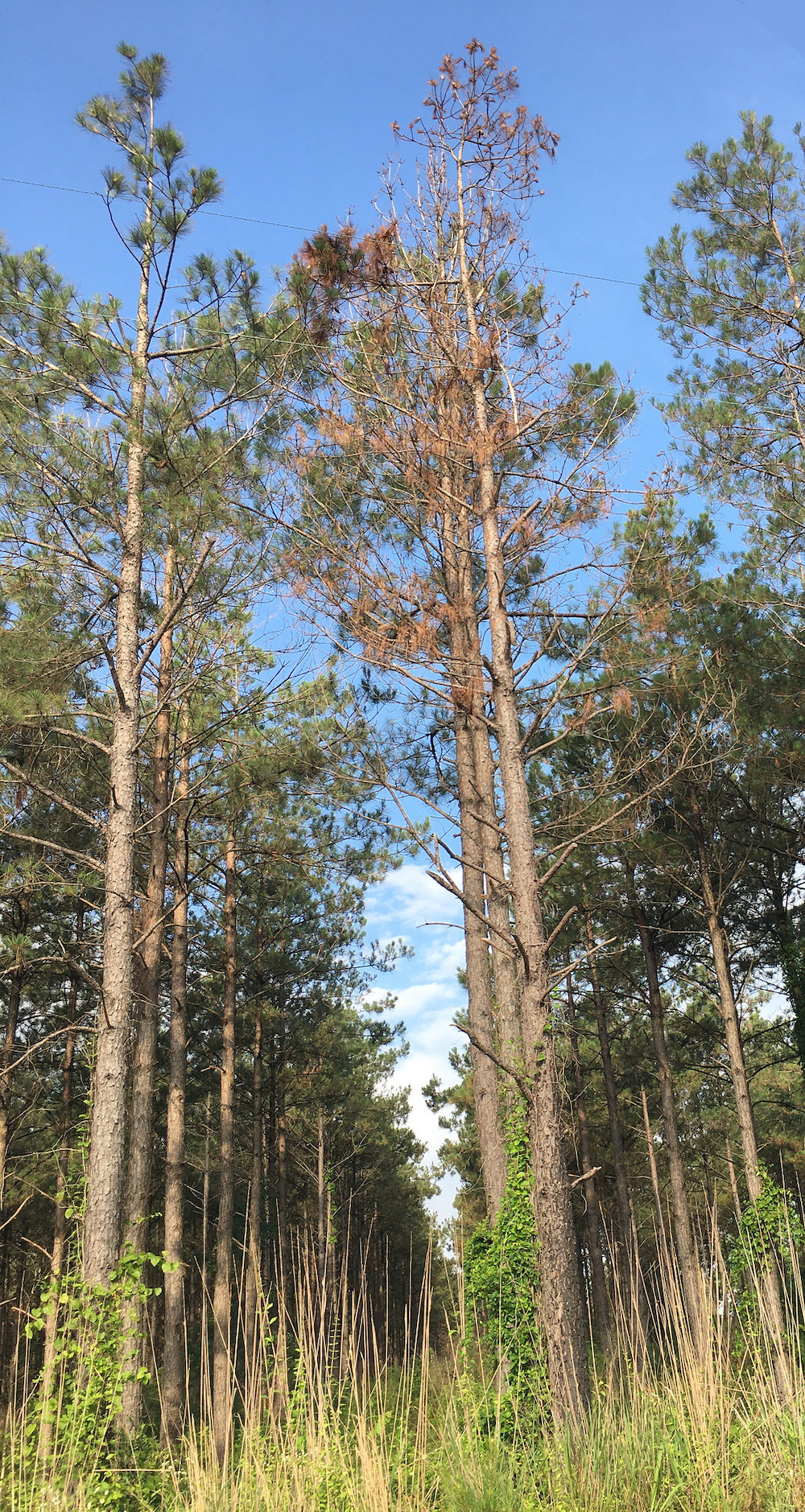LITTLE ROCK — Researchers plan to use artificial intelligence and remote sensing alongside some good old-fashioned detective work to find the cause of the pine decline seen in parts of Arkansas.
The decline has taken the form of browning and dropping of needles in stands of mature pines in southeastern Arkansas. The ailment has also resulted in the deaths of some trees.
Forestry experts from the Arkansas Department of Agriculture, the University of Arkansas System Division of Agriculture, University of Arkansas at Monticello and the Arkansas Forestry Association are working with colleagues across the southeastern United States to determine what’s going on with these stands.
By Mary Hightower
U of A System Division of Agriculture

In April, Grant Beckwith, Arkansas County extension staff chair, said he’d received calls from people concerned about pine trees whose green needles were turning brown and dropping.
Ford toured the areas and found that “all the trees dying were loblolly pine. About half of the dead trees show a proliferation of cones and is a reaction to stress and often before mortality.
“The decline could have a variety of causes. They could be stressed by several years’ of very wet springs,” said Vic Ford, a forester who is associate vice president for agriculture and natural resources for the Cooperative Extension Service. “That stress can leave trees weakened and vulnerable to damage from insects, disease or even herbicides.”
Other stress factors include drought, saturated conditions, lightning, injury to stem or roots, soil disturbance around the roots, crowded conditions and pollutants. Ford noted that in Arkansas County, the living trees around the dead ones showed various signs of stress.
Similar symptoms appeared in Ashley and Chicot counties.
Tech tools
Researchers are using a variety of approaches to investigate the causes. Samples from affected trees have been sent to a diagnostic lab at Auburn University. Results weren’t expected to be returned until later this month.
“We can use artificial intelligence, drones and geographic information systems to tease out clues to this decline,” Ford said. “We will need all the tools at our disposal to solve this case and find why forest health in these areas is being affected.”
Ford said that “conducting a survey and placing the locations on a map will help us to determine commonality of affected plots.
“Plot locations on these images can be used to determine soils, topographic features, stand characteristics, and changes of tree and environmental changes over time,” he said. “This information is compiled with a geographic information system. This large and complex data set needs to be analyzed so that important factors can be identified.
“Artificial intelligence programming can take complex information using several information sources and produce results. These programs allow the machines to discover information that is pertinent to cause and eliminate potential factors,” Ford said. “These routines learn from other dataset, computer routines, and mathematical models and can apply relationships within the plot data to cause and effect based on machine learning.”
Don’t panic
Michael Blazier, dean of the College of Forestry and Natural Resources at the University of Arkansas at Monticello, urged forestland owners to be patient until the exact cause of the decline can be pinpointed.
“What we don’t want is people to panic,” he said. “I’ve heard from landowners who are cutting and burning trees that appear to be in decline in an effort to keep anything from spreading. At this point, that kind of action might be premature. Determining how to change forest management in afflicted stands has to be evaluated on a case-by-case basis.”
“All of us are working hard to solve this issue that affects so many not only in Arkansas, but also the southeastern United States,” Blazier said. “Forestry, whether it’s through timber or the recreational opportunities it affords, is very important to the economies of the state and the South as a whole. It’s important we use all of our resources together to figure this out.”
Members of the public can report pine tree discoloration and/or mortality by filling out this survey: arcg.is/1HyHCu0.
To learn about extension programs in Arkansas, contact your local Cooperative Extension Service agent or visit www.uaex.uada.edu. Follow us on Twitter and Instagram at @AR_Extension. To learn more about Division of Agriculture research, visit the Arkansas Agricultural Experiment Station website: https://aaes.uada.edu/. Follow us on Twitter at @ArkAgResearch. To learn more about the Division of Agriculture, visit https://uada.edu/. Follow us on Twitter at @AgInArk.


